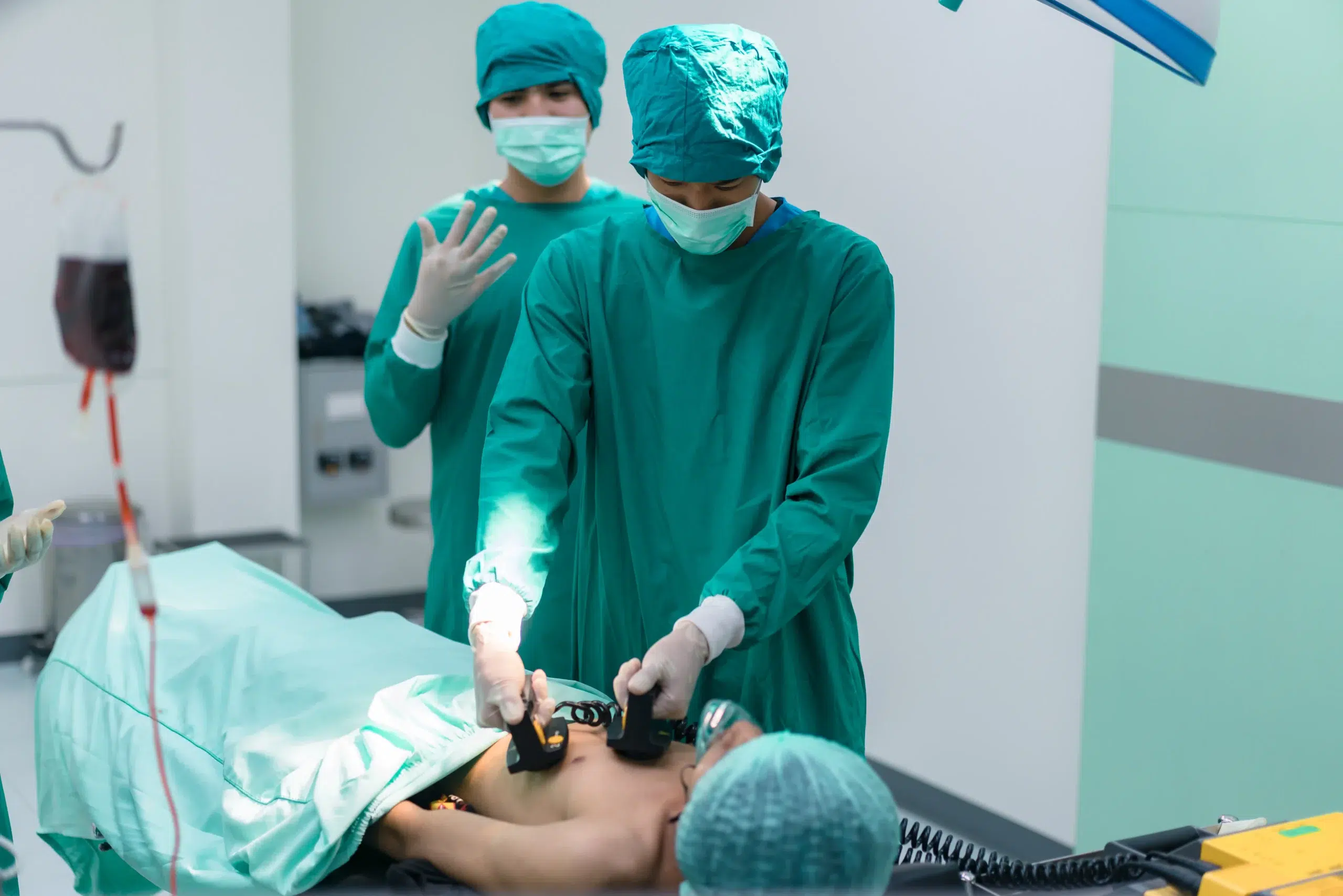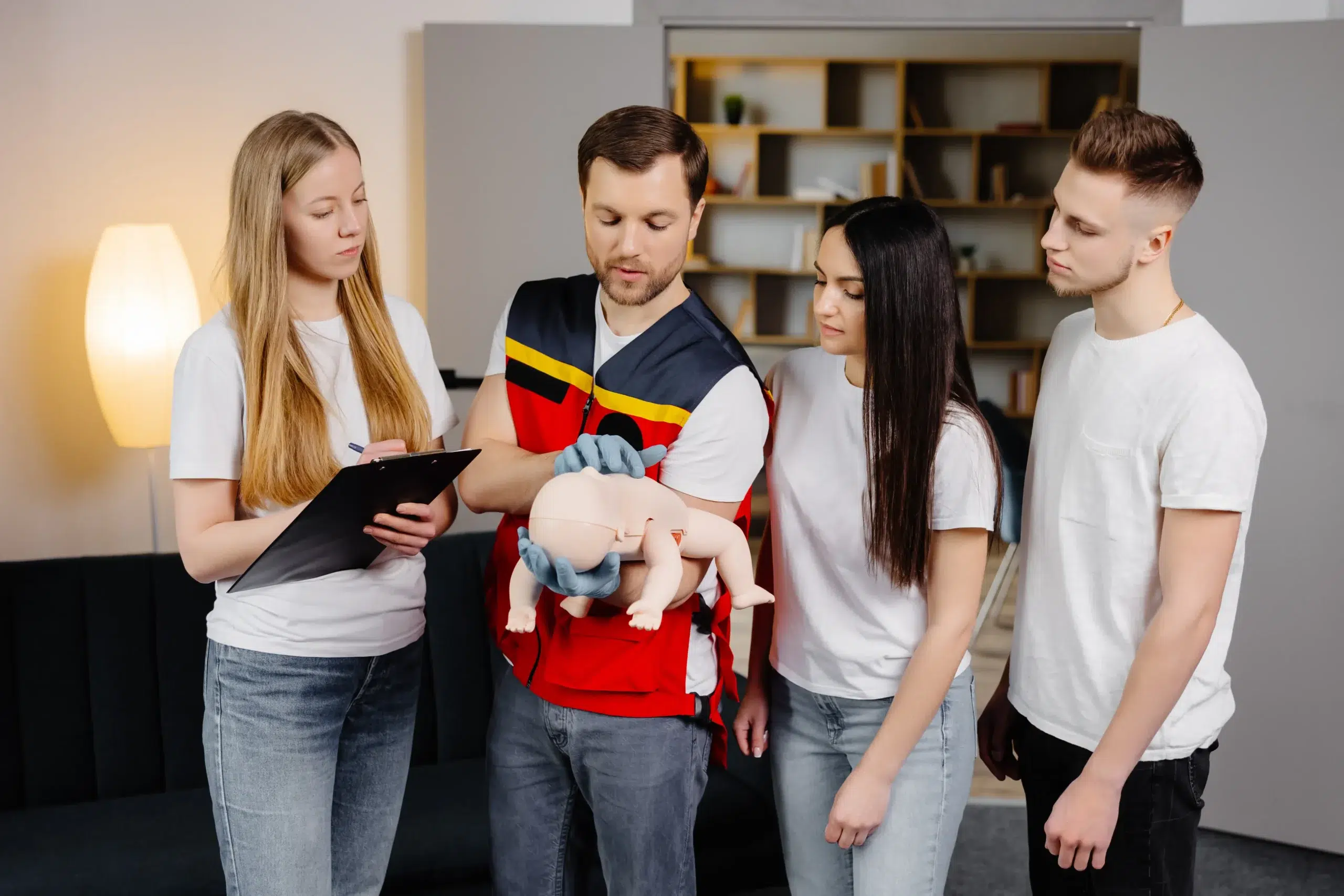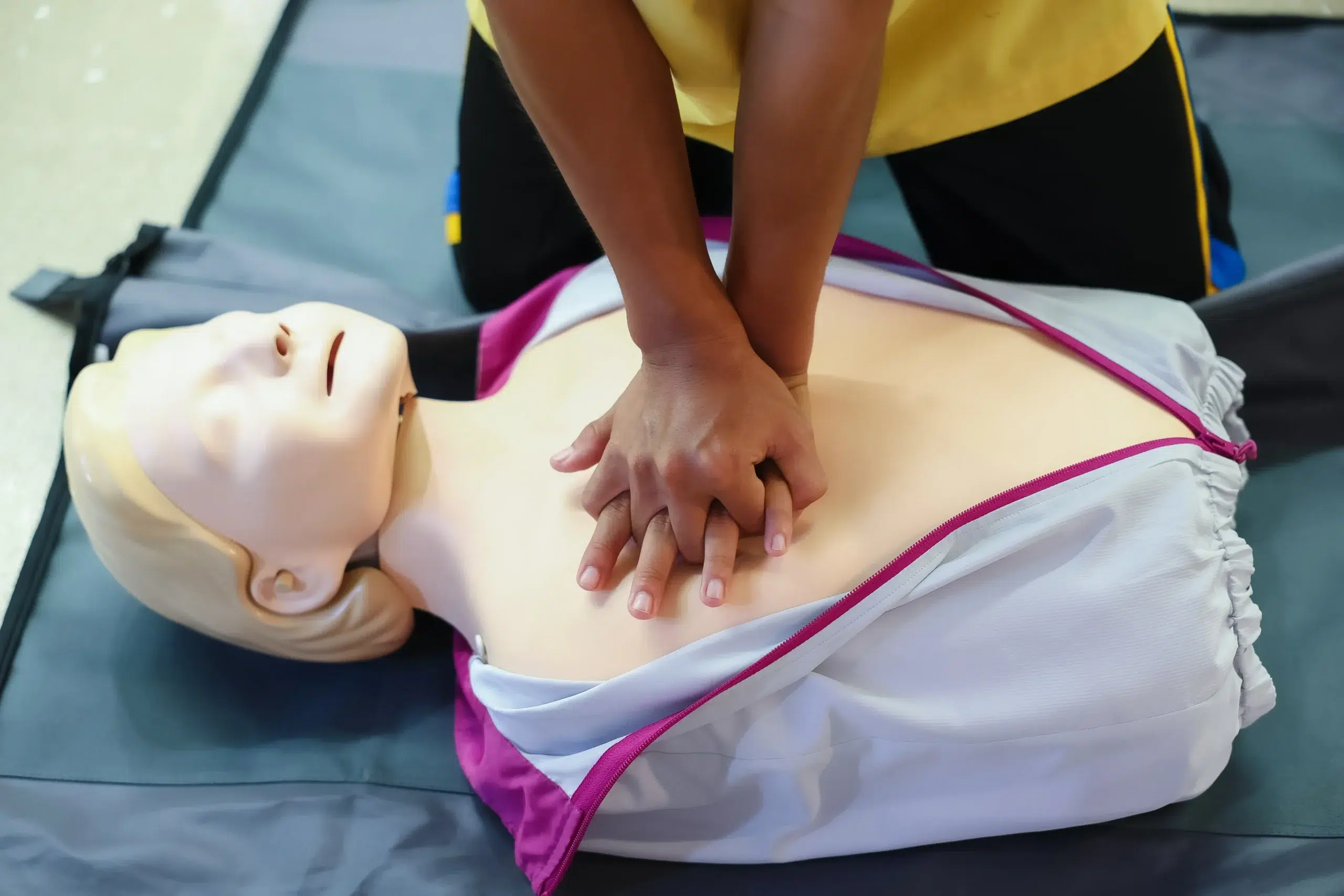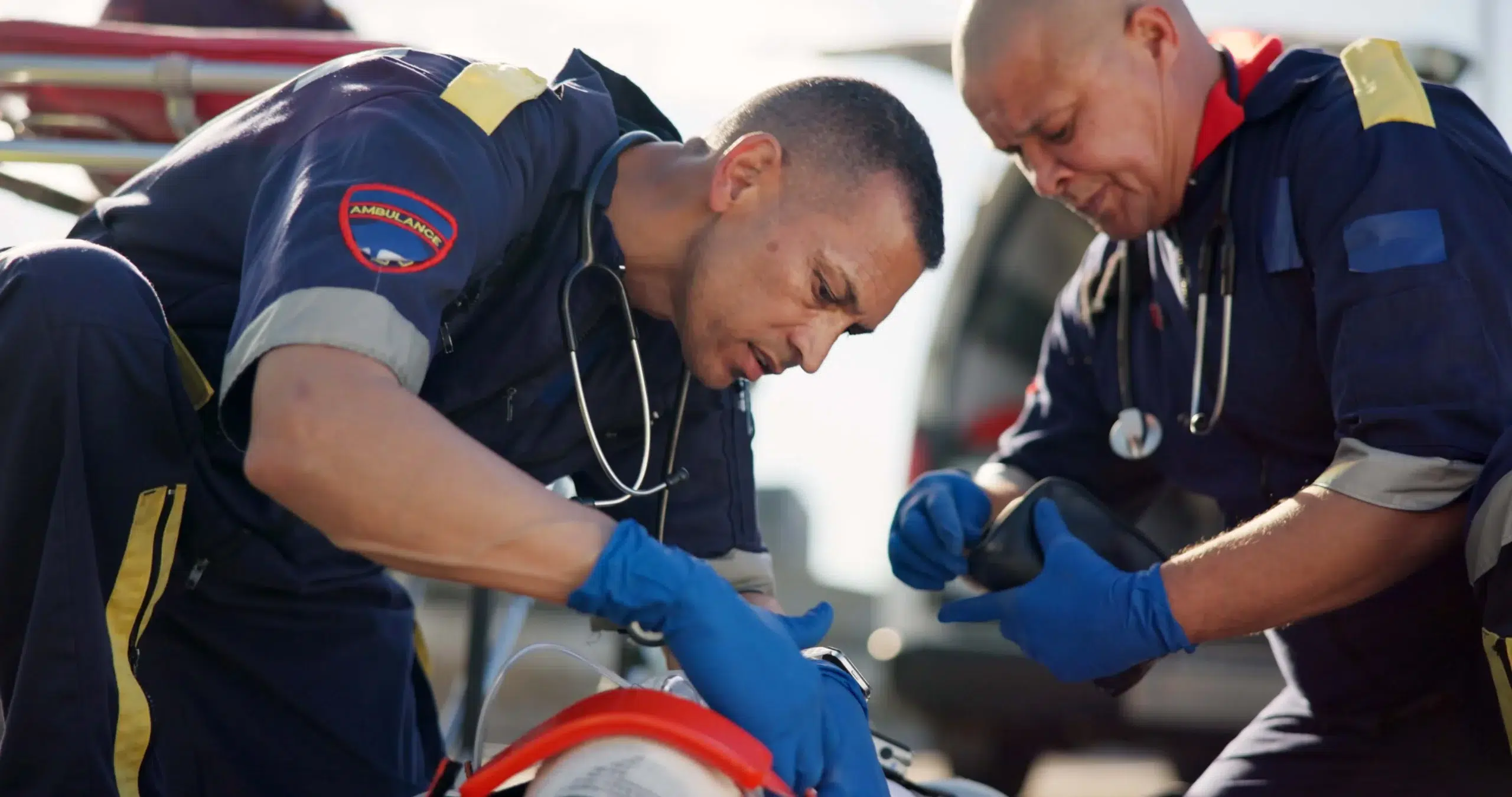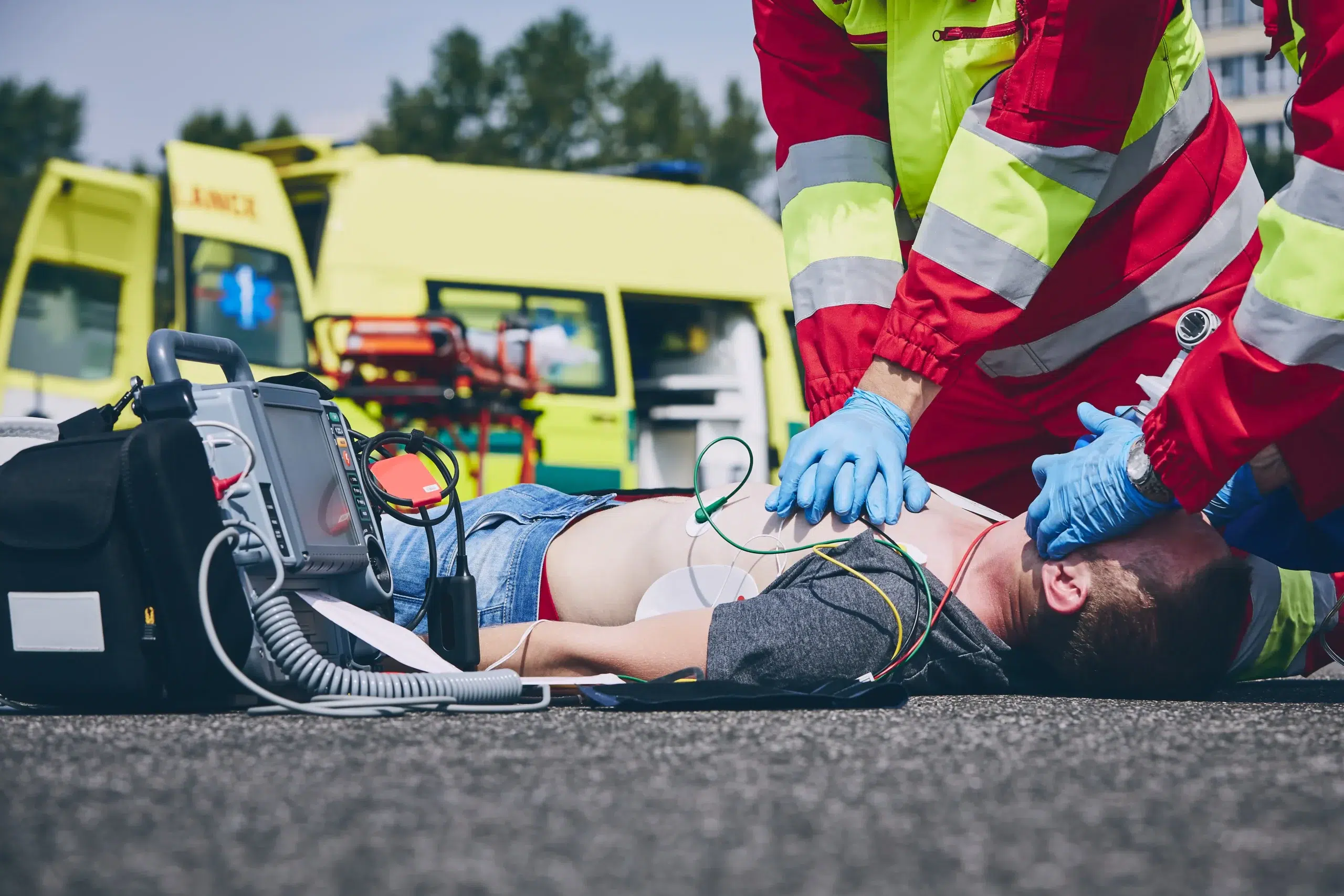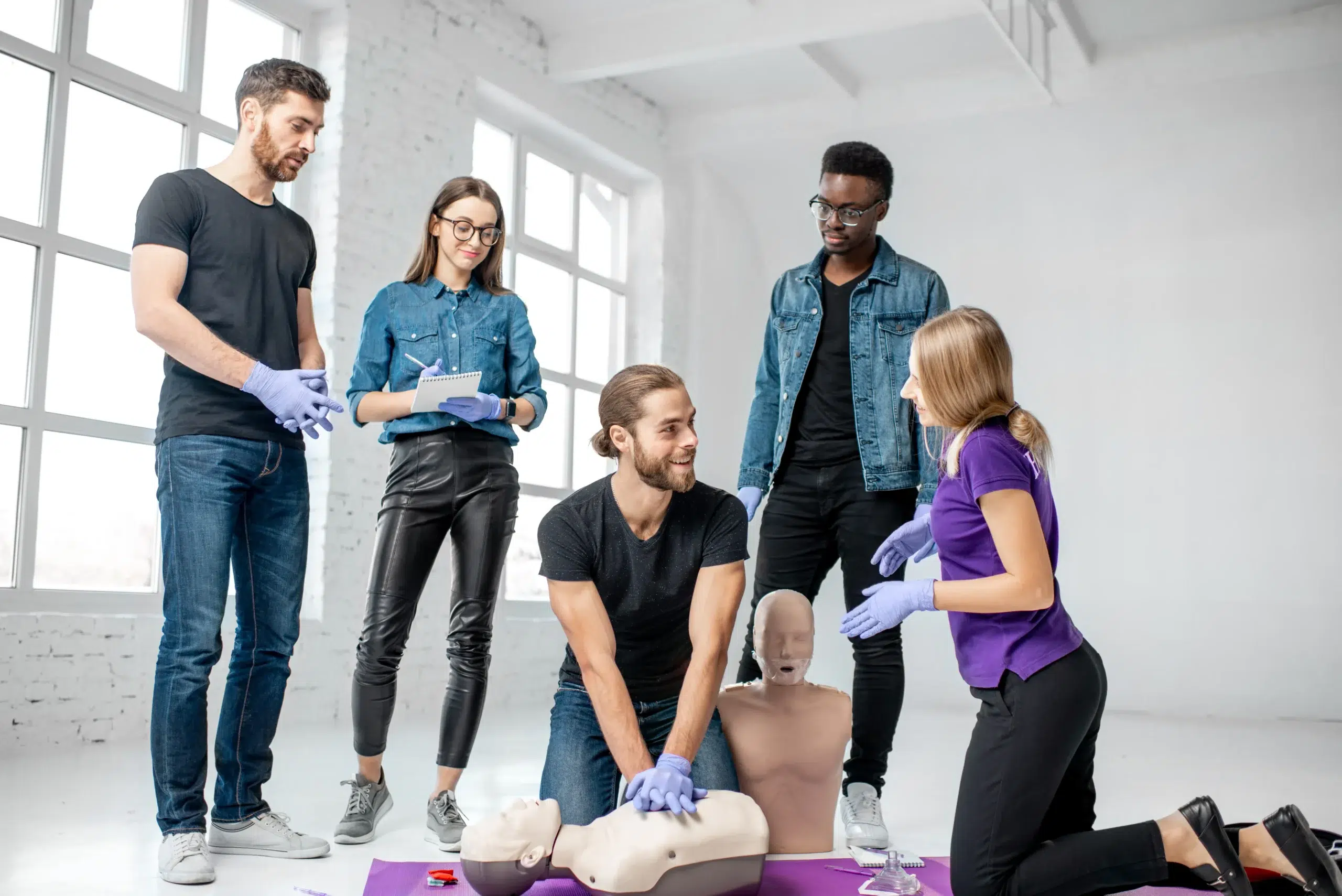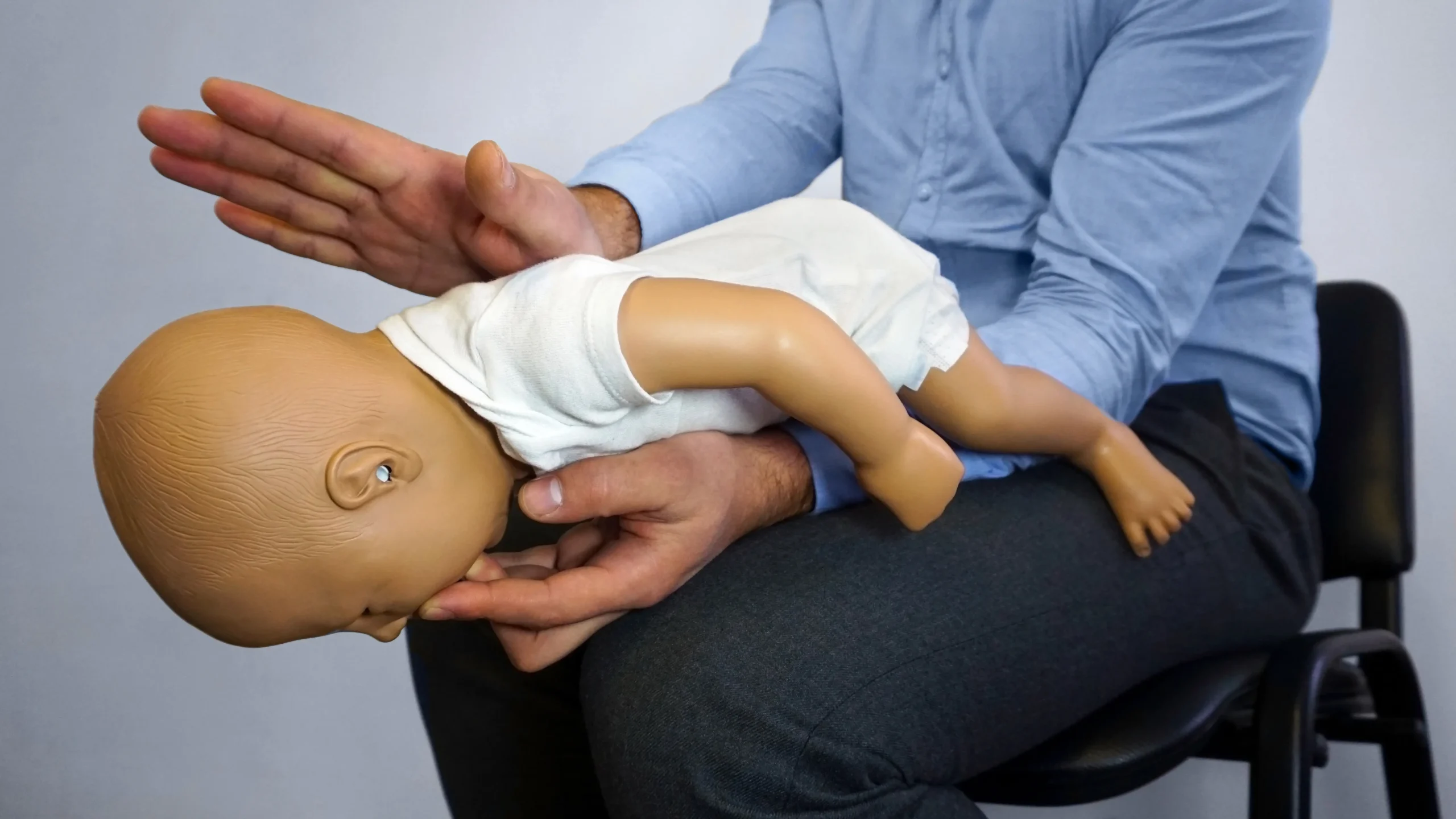Knowing how to respond to a medical emergency can make all the difference. Whether you’re a parent, caregiver, or simply want to be prepared for anything, first-aid training is a valuable skill. If you’ve been typing “first-aid classes near me” into your search bar, this guide is for you. We’ll break down the different types of first-aid training available, from basic wound care to CPR and AED certification. We’ll also explore how to find classes in your area, what to expect during training, and how to maintain your skills. Plus, we’ll discuss the importance of accessibility in first-aid training, ensuring everyone has the opportunity to learn these life-saving skills.
Key Takeaways
- First aid is for everyone: Learning first aid equips you to confidently handle medical emergencies—find a course that fits your needs and learning style.
- Choose training that works for you: Look for accredited providers with qualified instructors and hands-on practice. Consider class size and the type of training that aligns with your goals.
- Keep your skills sharp: Maintain your first-aid knowledge by recertifying regularly and practicing your skills. Explore local resources for refresher courses and stay up-to-date on the latest guidelines.
What are First-Aid Classes?
First-aid classes teach you how to handle medical emergencies before professional help arrives. These classes cover various topics, from treating minor injuries like cuts and burns to managing more serious situations like choking or a heart attack. Learning first aid empowers you to respond confidently and effectively in a crisis, potentially saving a life. It’s about providing immediate care, stabilizing the situation, and ensuring the best possible outcome before paramedics or other medical professionals arrive. First-aid training is for everyone, regardless of background or experience, and creates a more prepared and compassionate community. As CPR Certification Now highlights, first-aid training should be accessible to all, including individuals with disabilities, fostering a more inclusive and supportive society.
Types of First-Aid Training
First-aid training is offered at different levels to meet various needs. Emergency first-aid courses, often a single-day 8-hour class, focus on immediate responses to common injuries and emergencies, including CPR and treating minor wounds. Standard first-aid training provides more in-depth instruction for managing a broader range of medical situations. Upbeat Geek offers a helpful guide outlining the different levels of first-aid training, from basic skills for personal use to advanced training for healthcare professionals and high-risk environments. Choosing the right training depends on your goals, whether for personal preparedness, professional requirements, or volunteer work.
Why First-Aid Skills Matter
Knowing first aid is more than just having a certificate—it’s about having the confidence to act when it matters most. By Grace CPR Compliance emphasizes the importance of hands-on training to empower individuals with practical skills for real-life emergencies. First-aid skills can make a profound difference in various situations, from everyday mishaps at home or work to larger-scale emergencies. Your actions can help prevent a situation from worsening, minimize pain and suffering, and even save lives. MyCPR Now discusses the role of local governments in promoting first-aid awareness, highlighting how widespread training can create more resilient and prepared communities.
Find First-Aid Classes Near You
Finding the right first-aid class is easier than you think. Whether you prefer online convenience or in-person instruction, several ways exist to locate training near you.
Online Search Strategies
Start your search online. A quick Google search for “first-aid classes near me” will generate a list of potential providers in your area. You can also search for specific organizations like the American Red Cross or the American Heart Association. Many training providers offer online, in-person, and blended learning options, so you can choose the format that best suits your needs. Online first-aid classes are often self-paced, allowing you to begin immediately and learn at your own speed.
Explore Local Resources
Beyond online searches, tap into local resources. Check with community centers, hospitals, and fire departments, as they often host first-aid and CPR training. Your local YMCA or community college is another excellent place to explore. Also, ask friends, family, and coworkers for recommendations. Word-of-mouth can be a powerful way to find reputable providers. When researching options, confirm the provider offers AHA-certified first-aid training if it’s a requirement for your situation. Consider checking if they offer additional certifications like BLS, ACLS, and PALS. If you’re in the Dallas area, CPR Certification Dallas offers hands-on, small-group instruction. For those in Newark, California, check out Safety Training Seminars for local courses.
Choose the Right First-Aid Class Provider
Finding the right first-aid class is like choosing the right pair of shoes—it needs to fit your specific needs and provide the right support. Here’s what to look for:
Accreditation and Certification
First things first, check the provider’s accreditation and certifications. A recognized accrediting body ensures the training program aligns with established standards. For example, the American Camp Association (ACA) offers a helpful resource on certifications, but it’s important to note that being listed doesn’t equal a full endorsement. Always double-check what each certification actually means in terms of the training quality. The National CPR Foundation, for instance, states their accredited courses meet guidelines from organizations like the American Heart Association and OSHA, ensuring the training is current and relevant. This is the kind of detail you want to look for when choosing your first-aid certification.
Instructor Qualifications
Just as important as the curriculum are the people teaching it. Instructors should have verifiable credentials and experience. Think of it like choosing a doctor—you want someone with the right qualifications. MedTrainer explains that credentialing is a formal process to confirm a healthcare provider’s skills and background. Apply that same logic when selecting a first-aid instructor. Look for providers who clearly present their instructors’ qualifications and experience. After all, you’re entrusting them with teaching you life-saving skills.
Class Size and Hands-On Practice
Finally, consider the learning environment. A smaller class size often translates to more personalized attention and a chance to ask questions. Plus, hands-on practice is crucial for mastering first-aid skills. A Dallas-based provider sums it up well: small, hands-on classes make learning more effective. Also, think about the type of training you need. Emergency First Aid courses usually cover immediate responses to common injuries, often in a single day, emphasizing practical skills. If your goal is to be prepared for everyday emergencies, this focused approach might be perfect. Look for classes that offer ample opportunities for hands-on practice, so you can build confidence and competence.
Popular First-Aid Courses
Knowing which first-aid course fits your needs helps you prepare for unexpected emergencies. Whether you’re looking for basic life support skills or specialized training, understanding the different types of courses available is the first step. Let’s explore some popular options:
Basic First Aid
Basic First Aid training equips you with fundamental emergency response skills. Ideal for personal use, family care, or community settings, these courses cover essential techniques like CPR, bleeding control, basic wound care, treating burns, and handling situations like fainting. Basic First Aid courses are usually short, often completed in a half-day workshop, making them accessible for busy schedules. This foundational knowledge empowers you to respond effectively to common everyday emergencies. For more information on basic first-aid training, check out this helpful guide.
CPR and AED Training
CPR and AED training teaches life-saving techniques for cardiac arrest and respiratory emergencies. These courses provide hands-on practice, guiding you through the steps of CPR (cardiopulmonary resuscitation) and how to use an AED (automated external defibrillator). Because prompt intervention is crucial during these events, CPR and AED certification is often a requirement for healthcare professionals, caregivers, and those working in specific industries. Learning these skills can make a profound difference in the outcome of a medical crisis. Safety Training Seminars offers CPR and First-Aid certification courses to help you gain these essential skills. For additional insights, take a look at this article debunking common misconceptions about CPR and first aid.
Specialized First-Aid Classes
Beyond basic first aid, specialized courses cater to specific needs and professions. Emergency First Aid focuses on immediate responses to common injuries and emergencies, including CPR and treating minor wounds. These courses typically take a full day (around eight hours) to complete. More comprehensive training is available for those needing certification for their job or volunteer work. For example, wilderness first aid caters to outdoor enthusiasts and professionals, while pediatric first aid focuses on the unique needs of infants and children. Consider your specific circumstances and choose a specialized course that aligns with your requirements. To learn more about the differences between emergency and standard first aid, read this article.
Understand First-Aid Class Costs
Knowing the price range for first-aid classes helps you budget effectively. Let’s break down the typical costs and explore ways to save.
Average Price Range
A basic first-aid class usually falls between $40 and $60 per person. This covers essential skills like treating minor wounds, burns, and sprains. More comprehensive courses, such as those including CPR and AED training, often cost around $80. For example, our CPR and First-Aid Certification courses combine these life-saving skills. Remember, prices can vary depending on the training organization and your location, so comparing options is always smart.
Group Discounts and Special Offers
If you’re training with a group, look for discounts. Many providers offer reduced rates for workplaces, community organizations, or even groups of friends. Check our page on group CPR discounts to see how you can save. Some employers will cover the cost of first-aid and CPR certification, especially in fields where these skills are essential. It’s also worth checking the training provider’s website for any coupon codes or promotions. Our low price guarantee ensures you’re getting a great value.
What to Expect in Your First-Aid Class
So, you’ve signed up for a first-aid class—congratulations! Knowing what to expect can help you feel prepared and confident. Here’s a rundown of what you’ll encounter:
Class Structure and Duration
First-aid classes blend instruction and hands-on practice. Expect a combination of lectures, demonstrations, and interactive exercises. You’ll learn essential skills like treating burns, cuts, and sprains, and how to respond to medical emergencies. In-person classes provide immediate feedback from instructors and the opportunity to practice your skills in a safe environment. Blended learning combines online coursework with in-person skills sessions. Check with your chosen provider, like Safety Training Seminars, to see what formats they offer. Most basic first-aid courses run for about three hours, but this can vary. The Red Cross offers a variety of course formats to explore.
Materials and Equipment
Your first-aid class will provide all the necessary training materials, including bandages, dressings, and resuscitation mannequins. You’ll get hands-on practice using these supplies, so you’ll feel comfortable applying your skills in a real-life situation. Some providers may offer discounts on supplies if you want your own set. It’s always a good idea to ask your instructor if there’s anything specific you should bring. You can find more information on recommended first-aid supplies from resources like WorldPoint.
Certification Process and Validity
After successfully completing your first-aid class and skills check, you’ll receive a certification card. This card is typically valid for two years. Some organizations, like the American Red Cross, offer same-day certification. Check with your provider about their specific process. Renewal is straightforward—simply retake the course before your certification expires. The cost of certification varies, but you can often find options starting around $80. Safety Training Seminars offers a low-price guarantee, so you can be confident you’re getting a good value. You can compare pricing at other training centers like CPR Certification Dallas to get a sense of the average cost.
Prepare for Your First-Aid Training
Getting ready for your first-aid training is simple. A little prep work goes a long way toward a smooth and productive learning experience.
What to Bring
Most first-aid courses don’t require extensive supplies. Comfortable clothing is essential since you’ll be practicing hands-on skills. A notebook and pen are helpful for taking notes, though your instructor will likely provide key takeaways. Check with your chosen training center to see if they recommend bringing anything specific. For example, if you’re taking a blended learning course, you might need a laptop or tablet.
Pre-Class Study Materials
While not always mandatory, reviewing some basic first-aid information beforehand can be incredibly beneficial. It can help you get the most out of your class time. Brushing up on common first-aid misconceptions can also be a great way to prepare. Many reputable providers, like the Red Cross, offer resources to help you get started. This pre-class prep can make you feel more confident going into the training.
First-Aid Class Providers in Newark, CA
Finding the right first-aid class is easier than you think. Several respected organizations offer certification courses in Newark, CA, catering to various needs and schedules.
Safety Training Seminars
Safety Training Seminars offers a comprehensive selection of CPR, BLS, ACLS, PALS, and first-aid courses in Newark. With classes running daily, they make scheduling convenient. As an official American Heart Association Training Center, their certifications meet rigorous standards, making them ideal for healthcare providers and anyone seeking top-tier training. They also offer discounted group rates and a low price guarantee. Check their course calendar for upcoming BLS classes.
American Red Cross
The American Red Cross is a trusted name in first-aid and CPR training. They provide a range of courses, from introductory first aid to advanced life support, including CPR and AED certification. Known for their practical, hands-on approach, Red Cross classes equip participants with the skills to handle real-world emergencies. Visit their website to find a class near you.
American Heart Association
The American Heart Association (AHA) sets the standard for cardiovascular health and emergency care. They offer essential certifications like BLS, ACLS, and PALS for healthcare professionals. Their innovative Resuscitation Quality Improvement (RQI) program offers a modern approach to CPR training. Explore their website for more information on AHA courses.
National Safety Council
The National Safety Council (NSC) focuses on injury prevention and emergency preparedness. Their first-aid training programs cover a broad range of topics, from basic first aid and CPR to specialized workplace safety training. The NSC’s commitment to safety makes their courses valuable for individuals and organizations alike. Visit their website to learn more.
Make First-Aid Training Accessible
Accessibility in first-aid training is crucial. It means creating an inclusive learning environment where everyone, regardless of background or limitations, can learn these lifesaving skills. This involves adapting materials, offering multilingual options, and fostering inclusive training spaces. It’s about making sure everyone feels welcome, comfortable, and empowered to learn.
Adapted Training Materials
First-aid training materials should cater to diverse learning styles and needs. Think clear, concise language, large-print options, and visual aids. For people with hearing impairments, closed captions or transcripts of videos are essential. Adapting training materials ensures everyone can understand and apply the information effectively. This might also include offering courses with adjusted pacing or breaks for those with medical conditions. The goal is to remove any barriers to learning and make the information digestible for everyone.
Multilingual Options
Language barriers shouldn’t prevent anyone from learning first aid. Offering training in multiple languages makes these essential skills accessible to a wider range of communities. Multilingual training acknowledges the diverse cultural backgrounds within our communities and ensures everyone can participate fully. This can involve providing translated materials, interpretation services, or even instructors fluent in different languages. By breaking down language barriers, we can empower more people to be prepared in emergencies.
Inclusive Training Environments
Creating a welcoming and supportive atmosphere is key to accessible first-aid training. This means having inclusive training environments that are physically accessible to people with mobility limitations. It also means fostering a culture of respect and understanding where everyone feels comfortable asking questions and participating actively. Small class sizes can allow for more personalized attention, and instructors trained in diversity and inclusion can create a more positive learning experience for all. When everyone feels welcome and supported, they’re more likely to succeed in learning these vital skills.
Maintain Your First-Aid Skills
Once you’ve earned your first-aid certification, commit to keeping your skills fresh. Knowing what to do in a crisis can make all the difference. Regular practice and staying up-to-date on the latest guidelines will give you the confidence to act quickly and effectively in an emergency.
Recertification Requirements
First-aid certifications typically expire every two years. Organizations like the Red Cross and the American Heart Association offer recertification courses to keep your credentials current. Plan to renew your certification before it expires to ensure your skills are up-to-date and you remain qualified to provide assistance.
Ongoing Practice and Refresher Courses
Even if your certification is still valid, regular practice is key to maintaining muscle memory and confidence. Consider taking refresher courses or participating in small group practice sessions. Local providers often offer these types of classes, providing personalized instruction and a supportive environment to ask questions and reinforce your skills. Hands-on practice, like that offered in many first-aid courses, will help you stay comfortable and prepared to handle real-life emergencies. Online resources, such as those from Healthline First Aid, can also offer helpful tips and refreshers.
Related Articles
- First Aid Training in San Jose: A Complete Guide – Newark CPR Classes
- Pediatric CPR & First Aid Classes in San Jose – Newark CPR Classes
- Find BLS Classes Near Me: A Practical Guide – Newark CPR Classes
- Workplace CPR and First-Aid Training Saves Lives
- CPR & First-aid Classes in Newark, CA – Newark CPR Classes
Frequently Asked Questions
How do I choose the right first-aid class? Consider your specific needs and goals. Are you looking for personal preparedness, professional certification, or something else? Check the provider’s accreditation, instructor qualifications, class size, and the amount of hands-on practice offered. A smaller class size often allows for more personalized attention.
What’s the difference between basic first aid and CPR training? Basic first aid covers a range of skills for treating common injuries like cuts, burns, and sprains. CPR training focuses specifically on life-saving techniques for cardiac arrest and respiratory emergencies. Many courses combine both, giving you a well-rounded skillset.
How much do first-aid classes cost? Basic first-aid classes typically range from $40 to $60, while more comprehensive courses, including CPR/AED training, can cost around $80. Look for group discounts, special offers, or employer reimbursement programs to help manage costs.
How long is a first-aid certification valid, and how do I renew it? Most first-aid certifications are valid for two years. You’ll need to retake the course to renew your certification. Check with your provider for specific recertification requirements and available courses.
What can I do to keep my first-aid skills sharp after completing a course? Regular practice is key. Consider refresher courses, online resources, or practicing with friends or family. Hands-on practice builds confidence and helps you retain the information more effectively.
